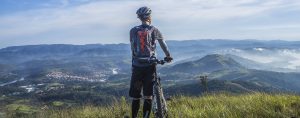While the U.S. is supposed to experience only fall, winter, spring and summer seasons, the effects of climate change created another period called fire season. The period happens between summer and fall, and when climate conditions are in the warmest; whilst drying out and turning forest matters into highly flammable materials.
During fire seasons, America’s forests are at great risk of catching wildfires, especially after going through a period of drought that has also dried out the assemblages in grasslands and scrublands. While the warmer and prolonged period of dryness are results of climate changes, the resulting wildfires will produce more CO2 emissions that will intensify the warming temperatures that affect forest ecosystems.
;
Ways Warming Temperatures Transform Forest Ecosystems Into Highly Flammable Components
While extreme precipitation and flooding from heavy rains occur in some U.S. regions, other areas will experience drought. Since drought affects the availability of water on which trees subsist, massive amount of leaves dry out and fall on forest floors during fire periods.
Dry trees become incapable of producing sap that provide protection against insects like the pine beetles that feed on trees. Eventually, when the trees become completely dried up and hollow, they accumulate as flammable components of forest ecosystems.
Climate change has also altered the intensity and frequency of thunderstorms that produce lightning that can accidentally strike dried up trees as natural causes of wildfires.
The prolonged period of dry weather presents extended opportunities for humans to engage in forest-related activities. Statistically, over 80% of all wildfires in the U.S. have been caused by humans who are unaware that they are building campfires and/or throwing cigarette butts in the midst of an already flammable forest environmemt.
All these and more have been cited by the U.S. Environmental as the most common effects of the warming temperature wrought by the increased levels of greenhouse gases in the atmosphere, particularly the longer-staying CO2.
The effects have worsened as they now result to hard to extinguish wildfires that can spread to dried grasslands and continue in other flammable forest areas. Even more devastating is that wildfire occurrences will produce millions of tons of CO2 that has long been determined as the root cause of climate changes.

